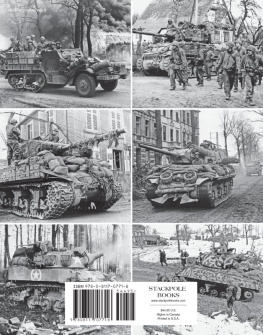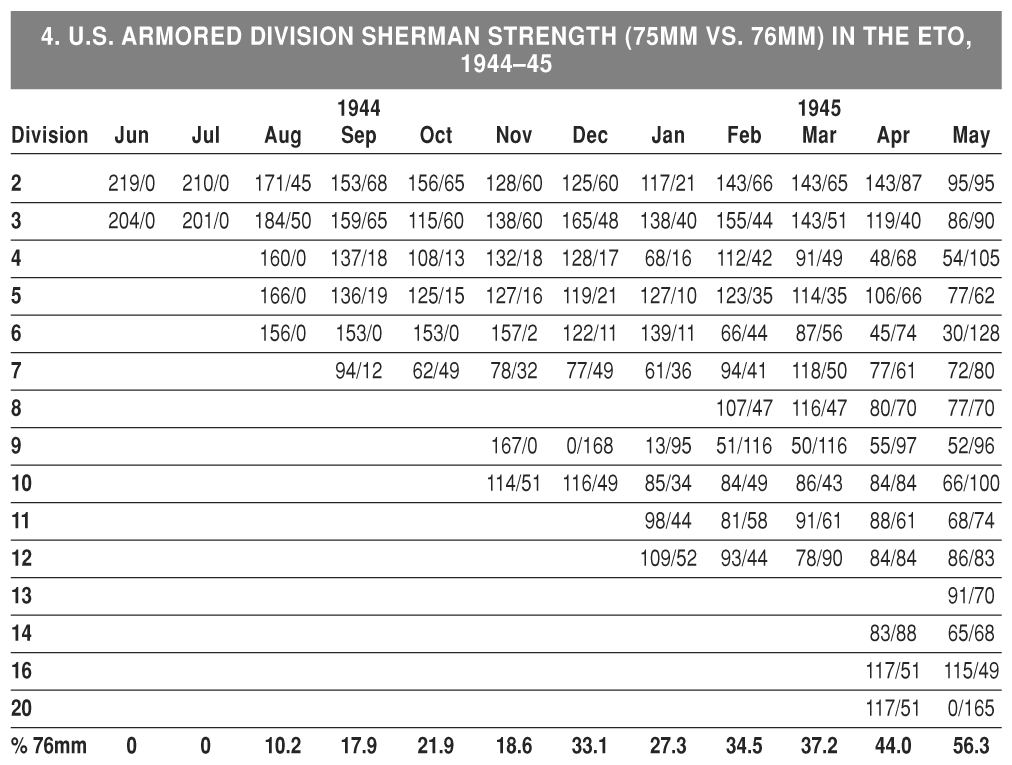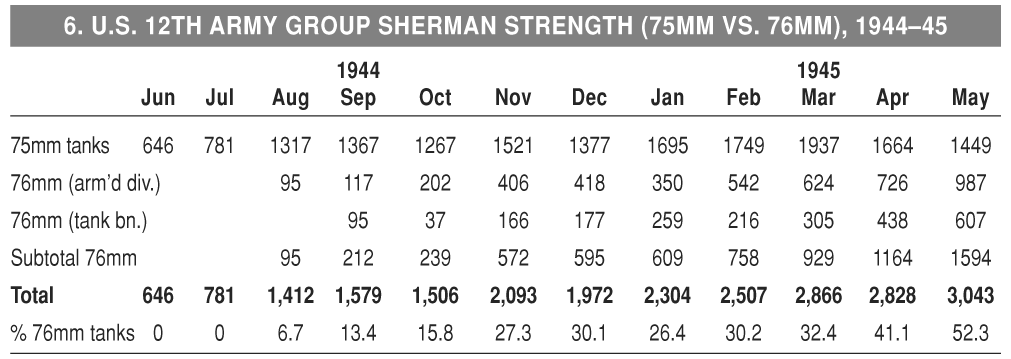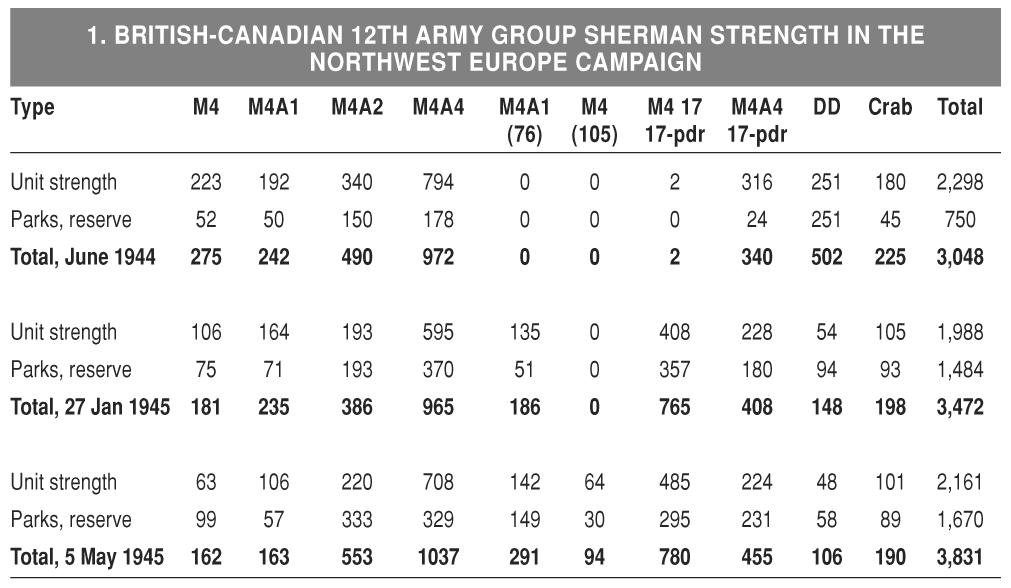APPENDIX A
Technical and Production Data
- Sherman Technical Data
- Sherman Manufacture and Distribution, 194245
- Sherman Production by Plant
- Sherman Production by Type
- Armor Penetration of U.S. Tank Guns
TANK, MEDIUM, M3
10 September 1942 revision
TANK, MEDIUM, M4A1
27 August 1942 revision
TANK, MEDIUM, M4A3E8 (76MM)
APPENDIX B
Strength and Loss Statistics
1. U.S. 1st Armored Division Medium Tank Strength in Tunisia, 1943
2. U.S. Fifth Army Sherman Losses in the Italian Campaign, 194345
3. U.S. First Army Sherman Strength and Losses in Normandy, JuneAugust 1944
4. U.S. Armored Division Sherman Strength (75mm vs. 76mm) in the ETO, 194445
5. U.S. 12th Army Group Separate Tank Battalion Sherman Strength (75mm vs. 76 mm)
6. U.S. 12th Army Group Sherman Strength (75 mm vs. 76 mm), 194445
7. U.S. 12th Army Group Sherman (76mm) Losses by Army, 194445
8. U.S. 6th Army Group Sherman Strength (75mm vs. 76mm)
9. U.S. Army Sherman Losses in the ETO, 194445
10. U.S. Army Sherman Losses in the ETO by Unit
11. Delivery of M4A3E8 (76mm) to Armies of the 12th Army Group in the ETO, 194445
12. U.S. Army Self-Propelled Tank Destroyer Strength and Losses in the ETO, 194445
13. T26E3 (M26) Pershing Deployed Strength in the ETO, 1945
APPENDIX C
Allied Data
- British-Canadian 21st Army Group Strength in the Northwest Europe Campaign
- British Sherman Designations
- Sherman Lend-Lease Shipments, 194245
Bibliographic Essay
THE U.S. ARMY HAS NOT been especially interested in the history of its weapons technology in World War IIor in the Cold War years either. The armys excellent Green Book series of histories of World War II are focused on the armys campaigns. Three volumes are devoted to Ordnance, but these are from an institutional perspective and do not offer a balanced look at the controversies of wartime tank development. This inattention is not confined to the history of tank programs; there is a similar gap in published histories of U.S. Army field artillery development, radar development, radio/communication development, and most other fields of technology. This is especially noticeable when comparing the armys indifference to technological history to the air force and navy.
An even more glaring shortcoming can be seen in the preservation of historical artifacts, with the armys collection of World War II tank and AFV designs rusting away at Aberdeen Proving Ground while the U.S. Air Force carefully preserves and displays its aircraft at Wright-Patterson Air Force Base. U.S. Army museums in the United States do not contain a single Sherman that was an actual combat veteran of World War II. Cobra King, the M4A3E2 assault tank that led Pattons relief of Bastogne, is sitting as a gate guard in Vilseck, Germany, its true identity largely unknown outside a small circle of Sherman buffs. A combat veteran M4 tank knocked out in the Netherlands in the autumn of 1944 and formerly at the Overloon museum was recently sold off to serve as a memorial to the Canadian troops who fought at Ortona, Italy. Most of the Sherman tanks that served in the ETO were given away to NATO allies or expended as range targets during the Cold War.
Technical histories of the various armored vehicle programs of World War II were written by Ordnance after the war but never published. These are from its perspective, although AGF also published a rather modest history of its own involvement in armored vehicle development as well. The Ordnance histories are still available at the U.S. National Archives and Records Administration (NARA) at College Park, Maryland. For those readers not willing or able to travel to NARA for these documents, the next best thing is the superb series of books by Richard Hunnicutt, including his volume on the Sherman, which are heavily based on Ordnance records.










































